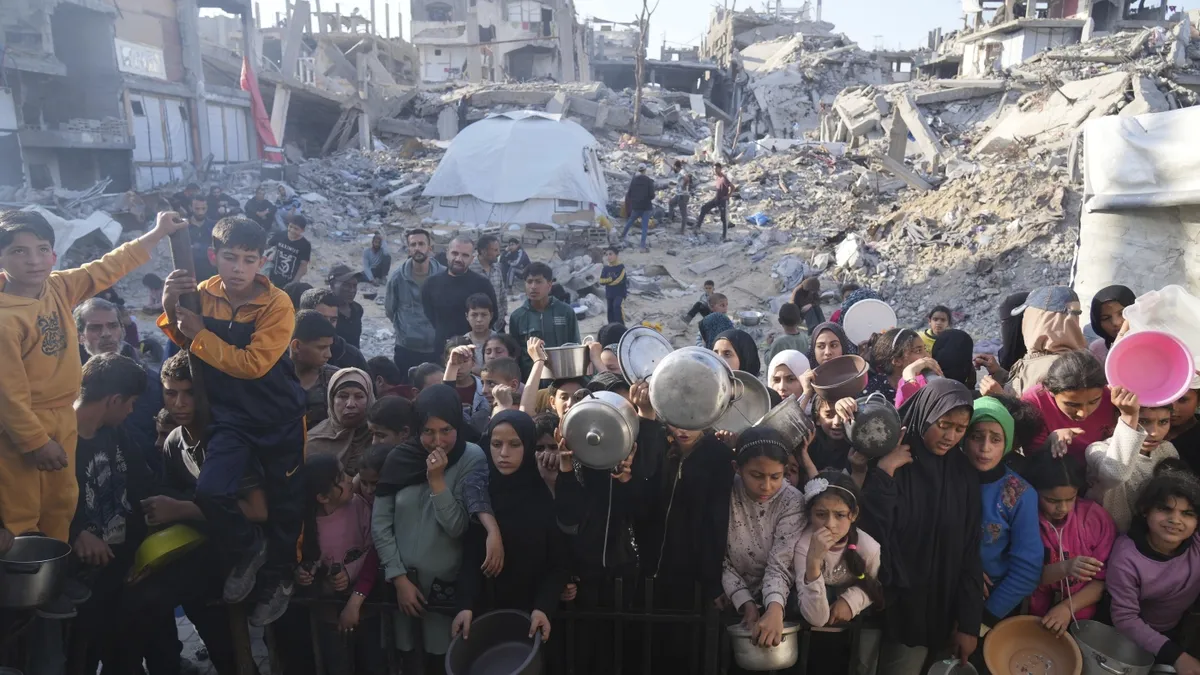
TEL AVIV, Israel — In a significant development ahead of President Trump's scheduled visit to Arab allies in the Gulf, the United States and Israel have announced a new initiative aimed at allowing food and essential supplies back into Gaza. This decision comes after a ten-week ban imposed by Israel, which humanitarian organizations warn has exacerbated the rampant hunger crisis in the region. According to a source familiar with the negotiations, who spoke on the condition of anonymity, the plan is a result of pressure from the Trump administration on Israel to facilitate aid access.
The proposed aid program is set to initially provide support to approximately 60 percent of Gaza's civilian population. This information was gleaned from a copy of the proposal reviewed by NPR. However, key aspects of the plan remain unresolved, including the management and funding of the initiative. This shift in policy marks a departure from Israel's earlier strategy, which sought to withhold aid as leverage against Hamas in negotiations for the release of Israeli hostages.
U.S. Ambassador to Israel, Mike Huckabee, has stated that Israel is fully supportive of the new humanitarian aid proposal. He emphasized that President Trump has made it clear that facilitating humanitarian aid to Gaza is a priority, urging his team to expedite the process. “We need to get humanitarian aid into the hands of the people as quickly as possible,” Huckabee declared during a recent press conference.
The aid distribution plan entails relocating Gaza's population to a designated southern area to receive assistance. This measure aims to prevent Hamas members from accessing the supplies, according to an Israeli defense official who requested anonymity while discussing sensitive operational details. A 14-page proposal indicates that a private charity, recently registered in Switzerland and named the Gaza Humanitarian Foundation, will establish four aid distribution sites to provide pre-packaged food, hygiene kits, and medical supplies.
Israeli Foreign Minister Gideon Saar publicly endorsed the initiative, calling on nations and humanitarian organizations to collaborate. He underscored that the plan is designed to ensure aid reaches the people directly, without interference from Hamas. “Hamas must not be allowed to get their hands on it,” Saar stated. He clarified that Israeli soldiers would not distribute aid but would instead secure the perimeter around the distribution sites.
Despite the outlined benefits of the new aid plan, several key humanitarian organizations have expressed their refusal to collaborate with the proposal as it currently stands. These groups argue that the program's approach to withholding aid from certain individuals, including potential adversaries, contradicts fundamental humanitarian principles. In a joint statement, the United Nations and its aid partners in Gaza voiced their concerns, asserting that they cannot endorse a program that appears to leverage aid as a military strategy.
According to Olga Cherevko, a representative from the U.N. Office for the Coordination of Humanitarian Affairs, there is no substantial evidence of aid diversion in Gaza. “The aid we coordinate goes directly to the intended recipients,” she asserted, highlighting the mechanisms in place to monitor distribution and ensure accountability.
Israel plans to wait until President Trump concludes his trip to Saudi Arabia, Qatar, and the United Arab Emirates before moving forward with the proposed aid plan. This timeline allows for the possibility of a ceasefire and a hostage release deal with Hamas. However, if no agreement is reached, Israel is prepared to implement the plan alongside intensified military operations in Gaza.
The initial distribution sites are projected to serve a combined total of 1.2 million Palestinians, which constitutes only about 60 percent of the estimated 2.1 million individuals living in Gaza. Huckabee has indicated that the aid distribution could expand to accommodate larger populations, depending on the situation's evolution.
Experts warn that the proposed U.S. aid program for Gaza represents a significant departure from the established U.N.-led humanitarian response framework. By replacing approximately 400 U.N. distribution points with only four, experts fear that this shift could overwhelm the new system and hinder equitable aid distribution to the large population in need.
Furthermore, the plan appears to align with Israel's broader military strategy, which aims to compel the migration of Palestinians from northern Gaza toward the southern border with Egypt. Humanitarian organizations are wary of endorsing strategies that may exacerbate displacement and suffering among Gazans. “The manner in which aid is delivered is just as crucial as the aid itself,” warned Paul Spiegel, director of the Center for Humanitarian Health at Johns Hopkins University. “This plan raises significant ethical concerns that cannot be overlooked.”
As discussions continue, the U.S. remains engaged with aid professionals to finalize the program's management and funding. However, the future of humanitarian aid in Gaza hangs in the balance as stakeholders grapple with the complexities of delivering assistance amid ongoing conflict.